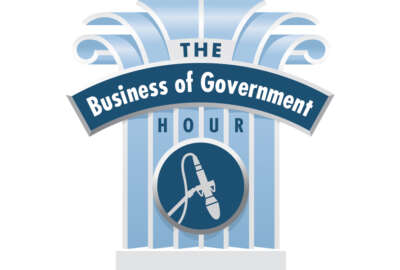Two National Science Foundation people win a prize for financial innovation
NSF's financial staff developed an artificial intelligence application called the Financial Obligation Root Cause Explorer, or FORCE. It won the innovation award...
Best listening experience is on Chrome, Firefox or Safari. Subscribe to Federal Drive’s daily audio interviews on Apple Podcasts or PodcastOne.
The National Science Foundation mainly awards grants. It has 50,000 of them out there right now. To analyze them, its financial staff developed an artificial intelligence application called the Financial Obligation Root Cause Explorer, or FORCE. It won the innovation award from the Association of Government Accountants. For what it is and what it does, the NSF’s payments and analytics branch chief, Jesse Simons joined the Federal Drive with Tom Temin.
Interview transcript:
Tom Temin: Mr. Simons, good to have you on.
Jesse Simons: Great to be here, Tom. Thanks for having me.
Tom Temin: And Obligation Root Cause Explorer sounds like something a dentist might use. But I guess it’s for financial people. Tell us about this.
Jesse Simons: Oh, I haven’t heard that one before, Tom But obligation is really a financial management term that can be equivalent to a grant, a contract, a purchase order or so on. So this would be an obligation of the government to start to use the the word in the definition itself, but an obligation of the government to pay a recipient a certain amount of funding. So within the division of financial management in my branch, one of our responsibilities is monitoring grants payments. So we oversee all the grant and commercial payments for the NSF, as well as we have a financial oversight responsibility, which includes monitoring some of the financial progress against these awards, as well as a role in the financial closeout process.
Tom Temin: Alright, so the implication, then, is that the standard financial systems used to manage money in the government don’t give you the kinds of answers you’re looking for with this explorer? Fair enough?
Jesse Simons: I think, Tom, I would put it this way. So we have a fairly mature oversight program at NSF. And we do a good job of getting our hands around the what. So how many grants do we have that are open? What’s the volume of unspent balances? But it’s harder to get a tangible sense of the why at scale. So if we have a grant that might be underspending or overspending relative to its peer group, this would require very individual research into progress reports submitted against the grants, maybe phone calls to some of the principal investigators or contacts at that institution or university, or other kind of time consuming and painstaking research. So we wanted to really see how we can leverage technology to look at this in a more scalable way and get more concepts around the why of grants that might have some points of interest and some of our other reporting out of our financial systems.
Tom Temin: And just explain, then, for the laymen how this works. When you issue a grant to, say, an institution to do some piece of research over three years or something, then they don’t get all of that grant all at once. They draw on money as they need it? Is that how it works? So that you look at the degree to which they’re drawing and if something is out of band, there might be a reason.
Jesse Simons: I think it depends. There’s different types of grants. I mean, we have some that are obligated or awarded in incremental annual installments. We have some that are awarded all upfront. But I think one of the inception points for FORCE was a dashboard that my team developed called the burn rate explorer. So a burn rate is kind of a colloquialism on what’s the rate of spending against a grant or contract. So you can think of this as, you know, if you have a $300,000 grant over three years, are you spending $100,000 a year or is that more unevenly distributed? Now, that’s not to say that every grant would spend in exactly a straight line, right? But this dashboard allows us to visually very quickly identify any grants that are spending differently from their peer group. And this might be a point of interest for us.
Tom Temin: In other words, it points the ways to where you should do some further investigation into what’s going on with that particular grant.
Jesse Simons: Yes, that’s exactly right, Tom. And so that kind of brings the second component of FORCE into focus, which is something called the lingo 4G explorer. So what lingo 4G is, is it’s an artificial intelligence platform that ingests hundreds of thousands of NSF documents. So these are things like proposals, annual progress, reports, outcomes, reports. And it uses what’s called natural language processing to extract words and key phrases about that underlying research and associated activities. So what that means in laymen’s terms is we have these machine algorithms that are able to read these unstructured text, unstructured meaning. It’s not in kind of cells and columns in spreadsheets like most of us accountants and financial professionals are used to dealing with. But it’s able to read that, just like you and I would read that using our vocabulary, reading comprehension skills. And it’s able to pull out meaningful words and phrases that we can use to get more insights about those grant activities.
Tom Temin: We’re speaking with Jesse Simons. He’s payments and analytics branch chief at the National Science Foundation. And did you come at this as a financial person who just couldn’t quite get the answers you needed with standard systems? Or are you a techie that said to the finance people, golly, if you could do this, then you could do that?
Jesse Simons: Um, that’s an interesting question, Tom. I’d say it’s a little bit of both. So I’m actually a little new to the federal government. I joined NSF in March of 2020, shortly before the pandemic. Prior to that, I spent 12 years as a consultant working with federal agencies. And it was an interesting time to join the government, you know, on the the wake of the COVID-19 pandemic, which kind of heightened our awareness around our financial oversight. So I mean, my career has always really been focused on bridging the gap between finance and technology. And I think another big priority government-wide right now is around up-skilling. Our deputy CFO Mike Wetklow is very involved in a government-wide initiative to build data literacy and technology literacy across specifically financial management professionals in the federal government. And I think this was a unique opportunity that some of the key components were developed my federal staff on my team. And I think coming from the private sector, working on a lot of these types of projects, invariably spend maybe 20 to 30% of the time learning about the requirements, and what does the customer want, what’s the business problem we’re trying to solve. But now being able to learn some of these technologies and tools on our own, we already know the business and we already know the data. So it allows for this kind of seamless vertical integration, where we know the problem we’re trying to solve, we just seem to learn the tools to get us there. So I think FORCE was a really interesting use case for us to deploy that in practice.
Tom Temin: And how did you get it developed? Was it done by staff? Was it done by the U.S. digital service? Or did you have a contractor?
Jesse Simons: It was a mix. So I think the burn rate explorer was developed by federal staff, by my team. The lingo for 4G explorer was a tool that previously existed in NSF, but it was never really used in this way. Currently, it’s used to kind of look at themes across scientific research. I mean, that’s just one of many use cases, to give an example. So let’s say you wanted to see what NSF is doing around the field of quantum computing, you can type in quantum computing in a easy to use query box, and you can see these fantastic visualizations on everywhere quantum computing is being done across agencies. So we’re working with a very talented data scientist within NSF, Paul Morris, and you know, we had a conversation around, you know, we’re seeing a lot of awards that we knew would be impacted by the pandemic like education grants, which schools may have been impacted by enrollment counts being down, but some fields of science that we weren’t really certain why they would be impacted. And then digging into one of those grants, we saw that there were a lot of international students on that specific grant. And then there were international visa restrictions for them to travel because of COVID-19. So it kind of set out this chain reaction on what if we can do what we did for this one award manually and scale that? So instead of looking at the award proposal data, why don’t we try to look at some of the annual progress reports and outcome reports and look at some of the themes across the research that might be impacted by some of this over or underspending.
Tom Temin: So this really adds up to a program oversight, accountability and almost quality management tool then for the grant process.
Jesse Simons: I think so, Tom. I mean, I think it also helps us in it gives us a new sense of market intelligence around our customers, our grantees. So I mean, you see different applications of AI in the private sector, you know, figure out what advertisement they should show you on social media or something like that. In this case, we have 50,000, open grants at a given time. This tool allows us to analyze those in, you know, less than a minute, and instantly gets some key insights that can kind of inform some of our business assistance and outreach to these individual grantees, which I think is really powerful with a limited number of federal resources on a large pool of grantees to cover.
Tom Temin: And of course, the federal government spends more on grants than it does on contracts in a given year. And almost every agency makes grants is this tool portable to other agencies?
Jesse Simons: I think so. So I think that was one of our calls to action when we presented this at AGA, that there is a great deal of proprietary data within the tool itself. So it wouldn’t be fit for maybe external use. But with the right knowledge-sharing agreements, I mean, there’s agencies with similar missions to NSF, certainly similar sets of grantees, with academic institutions being a being part of our constituency. So I think with the right collaboration across other agencies, there could be a great deal of portability and transferability.
Tom Temin: Sounds like you might have a couple of software licensing issues buried in there also.
Jesse Simons: So the first component, I think, could be built with a number of different tools. I mean, you could build it in Excel, if you wanted to, if you had the data that you needed. I think it’s more getting kind of the conceptual layout of what you want to do. You know, the artificial intelligence platform that we use, it does have some open source components, meaning freely available, freely editable. There are some proprietary components in there as well. But you know, I think this could also be approached too agnostically as well, and maybe not married to any specific product.
Tom Temin: Jesse Simons is payments and analytics branch chief at the National Science Foundation. Thanks so much for joining me.
Jesse Simons: Thank you, Tom. It’s a pleasure to be here.
Copyright © 2025 Federal News Network. All rights reserved. This website is not intended for users located within the European Economic Area.
Tom Temin is host of the Federal Drive and has been providing insight on federal technology and management issues for more than 30 years.
Follow @tteminWFED






